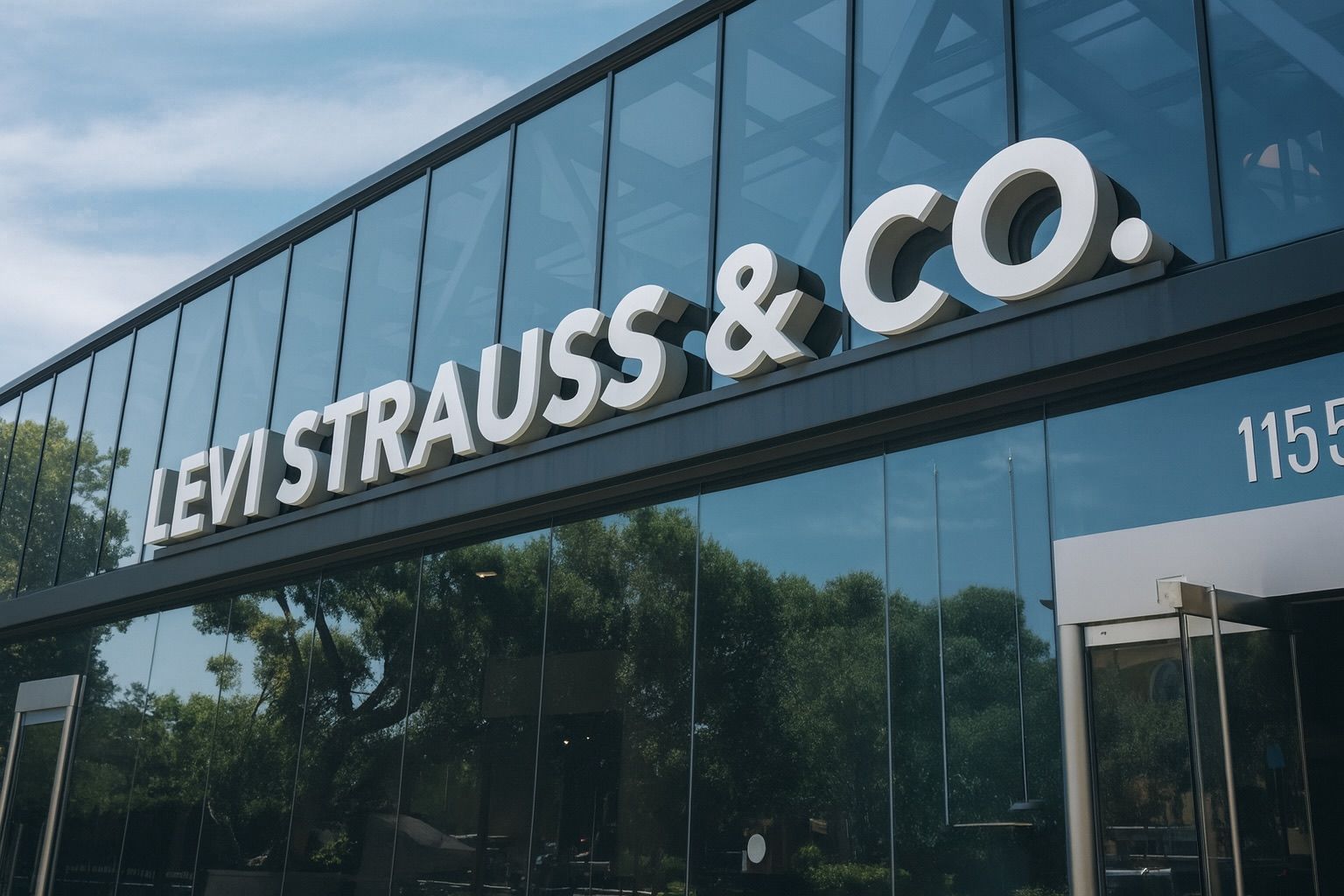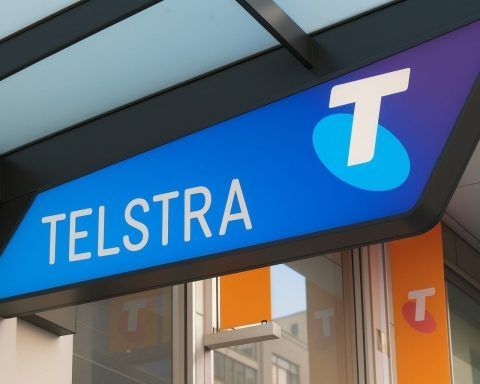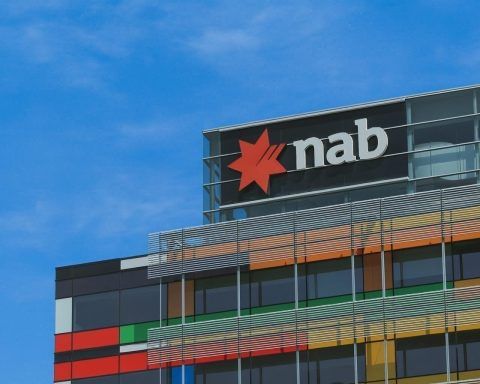- Stock Price (Oct 9, 2025): ~$24.54 per share at close (down ~6% to ~$23.04 in after-hours trading after earnings) [1] [2].
- Market Capitalization: Approx. $9.7 billion mid-cap company [3] (up ~21% year-over-year).
- Price-Earnings (P/E) Ratio: ~24 trailing P/E, 18 forward P/E – reflecting robust earnings growth expectations [4].
- Dividend Yield: $0.14 quarterly dividend (annualized ~2.3% yield) – with aggressive share buybacks boosting shareholder returns [5].
- Recent Performance: Stock +27% in the past 12 months (hitting 52-week highs) [6]; +80% in the last 6 months amid improving results and upbeat guidance.
- Fiscal 2024 Revenue: $6.4 billion (FY2024) [7]; trailing 12-month net income ~$405 million (EPS ~$1.01) [8]. FY2025 outlook raised to ~$6.5–6.6 billion revenue (+3% YoY) and adjusted EPS $1.27–$1.32 [9].
- Analyst Consensus: “Moderate Buy” – ~9 Buy, 4 Hold ratings. Average 12-month price target ~$25 (just ~2% above recent price) [10] [11], reflecting limited upside unless Levi’s outperforms expectations.
Blockbuster Q3 Earnings – Sales Beat and Outlook Raised
Levi Strauss & Co. delivered strong third-quarter 2025 results, topping estimates and defying retail sector headwinds. Revenue for Q3 (June–August 2025) hit $1.54 billion, up 7% year-on-year and slightly above analyst expectations of ~$1.50 billion [12] [13]. Adjusted earnings were $0.34 per share, a penny higher than a year ago and beating the $0.31 consensus estimate [14]. The company achieved broad-based growth across channels, regions, and product categories. Direct-to-consumer (DTC) sales – through Levi’s own stores and website – surged +11%(organically +9%), now making up 46% of total revenue [15] [16]. Notably, e-commerce sales jumped 16% as Levi’s leaned into online and full-price selling [17].
This quarter showcased improving profitability. Gross margin expanded 61.7% (up 110 basis points year-on-year) despite higher import tariffs, thanks to a richer product mix and pricing power [18]. Operating margin climbed to 10.8% (vs. a scant 2.3% a year ago) as Levi’s anniversary-ed hefty prior-year charges [19]. Even on an adjusted basis, EBIT margins held strong at 11.8% [20]. Net income from continuing operations was $122 million (GAAP), a five-fold jump from $23 million in the prior-year quarter (which had unusual charges) [21]. “We delivered another very strong quarter as our pivot to becoming a DTC-first, head-to-toe denim lifestyle retailer is driving a meaningful inflection in our financial performance,” said CEO Michelle Gass [22]. She noted strength “across channels, segments and categories” and expressed confidence heading into the holidays even though “the macro environment remains complex.” [23]
International markets provided a lift, helping offset U.S. softness. Asia revenue jumped +12% and Europe grew +5%(year-over-year in Q3) [24] [25], buoyed by robust denim demand (especially trendy Y2K-inspired styles that drove sales in Europe and the Americas) [26]. One analysis highlighted “ongoing robust growth in international markets, particularly Europe (up 15%… and Latin America up 18%)” as evidence Levi’s is successfully capturing global demand and reducing geographic concentration risk [27]. In the core Americas region, sales rose a solid 6% (with Levi’s home U.S. market up ~3% organically) [28] [29]. Levi’s broad global footprint (120+ countries) and iconic brand appeal helped cushion weaker spots in domestic wholesale.
Stock Slips on Cautious Forecast Despite the Beat
Paradoxically, Levi’s strong Q3 report was met with a stock selloff. Shares fell about 5–6% in after-hours tradingimmediately following the Oct 9 earnings release [30] [31]. Why the pullback? Wall Street had high expectations, given Levi’s streak of upbeat results. Some investors apparently “were looking for a stronger beat” on earnings after an especially robust Q2 showing [32] [33]. Moreover, management’s forward guidance – while raised – came in only mildly above prior forecasts, and a notch below some analysts’ hopes [34] [35].
Levi’s updated outlook now calls for full-year FY2025 adjusted EPS of $1.27–$1.32 (up from $1.25–$1.30 before). This was a raise, but the midpoint ($1.295) just shy of Wall Street’s $1.31 consensus [36] [37]. Similarly, Levi’s bumped its revenue growth target to ~+3% (from +1–2%), implying ~$6.5–6.6 billion in sales [38] [39]. That is healthy growth, but not a dramatic beat relative to expectations. In short, the forecast was optimistic but not “blow-out”, prompting a “sell-the-news” reaction. As Reuters reported, “the projection fell short of Wall Street expectations, sending shares…down ~6% in extended trading.” [40] [41]Traders also noted that Levi’s prior run-up (the stock had rallied to 52-week highs ahead of earnings [42] [43]) left little room for disappointment. The consensus analyst view is that Levi’s valuation already reflects much of its near-term growth; one narrative put fair value around $24–25 (about where the stock traded pre-earnings) [44] [45].
Driving Factors: Denim Demand and DTC Strategy
Several tailwinds are fueling Levi’s momentum. First, denim’s popularity is on an upswing, benefiting an iconic brand like Levi’s. Fashion trends like loose, 1990s/Y2K-inspired denim styles have resonated particularly well, boosting Levi’s sales in key markets [46]. The company cited “strong demand for Y2K-inspired styles” lifting results in both Europe and the Americas [47]. Levi’s also broadened its product assortment (“head-to-toe” lifestyle offerings beyond just blue jeans), attracting shoppers with new fits, tops, and even collaborations (e.g. its ongoing partnership with pop icon Beyoncé on limited collections). This has helped expand Levi’s reach to women and younger consumers, categories management sees as big growth opportunities.
Secondly, Levi’s strategic pivot to DTC (Direct-to-Consumer) retail is paying off. By selling more through Levi’s own stores and website, the company keeps more margin and maintains better control over pricing (reducing reliance on discount-driven department stores). In Q3, DTC channel sales rose by double digits and now account for nearly half of total revenue [48] [49]. Levi’s e-commerce sales in particular surged +18% [50] [51], reflecting effective digital marketing and global e-commerce expansion. Full-price selling has increased – CFO Harmit Singh noted Levi’s has “kept a tight leash” on its assortment and leaned into full-price DTC sales to protect the brand [52]. This discipline helped prop up gross margins even amid rising costs [53]. “Our Q3 results demonstrate the power of our strategic transformation,” said CFO Singh, pointing to record gross margins and four consecutive quarters of high-single-digit organic growth [54] [55].
Third, international diversification has become a strength. While U.S. consumers face inflation pressures, Levi’s is seeing outsized growth abroad – especially in Asia (China, India, etc.) and emerging markets where a growing middle class is buying into the Levi’s brand. European performance has been solid as well. According to analysts, Levi’s success in markets like France, the U.K., Italy and Spain (recently achieving double-digit gains in some countries) shows it is “capturing rising demand from an expanding global middle class” – supporting sustained revenue expansion across regions [56]. This international balance helps mitigate risk if any single market softens.
Finally, Levi’s leadership is making notable strategic moves. New CEO Michelle Gass (formerly Kohl’s) took the helm in 2024 and has emphasized agility, brand elevation, and direct consumer connection. Under her watch, Levi’s has undertaken a portfolio shake-up – most notably selling the Dockers® brand. In fact, this quarter Levi’s completed the sale of Dockers in the U.S. and Canada (with the rest closing by early 2026) as part of a deal to divest Dockers to Authentic Brands Group for up to $391 million [57]. “The Dockers transaction further aligns our portfolio with our strategic priorities, focusing on our DTC-first approach, growing our international presence and investing in women’s and denim lifestyle,” Gass said when announcing the sale [58]. By shedding a non-core khaki brand, Levi’s can focus on its core Levi’s® denim business and the recently acquired Beyond Yoga® activewear line [59]. Proceeds from the Dockers sale are being partly returned to shareholders – Levi’s earmarked ~$100 million for share buybacks from this deal [60].
Financial Checkup: Solid Fundamentals and Shareholder Returns
Levi Strauss’s financial fundamentals have strengthened considerably over the past year. Trailing twelve-month revenue is about $6.5 billion, and adjusted profit margins are improving. Gross margin in Q3 reached 61.7%, a record level, even after absorbing about an 80 basis point hit from new tariffs [61] [62]. This reflects pricing power and cost discipline – Levi’s has implemented modest price hikes on its products and tightly managed inventory (SKU count) to keep profitability on track [63]. Operating expense (SG&A) growth has been kept to ~7% annually [64], even as the company invests in its stores and digital capabilities. Adjusted EBIT margin is running around 12%, and return on equity is over 20% [65] [66], healthy for an apparel maker.
The balance sheet and liquidity position are also in good shape. As of Aug 31, Levi’s held $613 million in cash and $1.5 billion in total liquidity [67], providing a cushion for growth investments or any bumps in the road. Inventory was up ~12% vs. last year [68], which the company attributed to building stock ahead of the holiday season (including securing inventory early to guard against supply disruptions) [69]. Notably, Levi’s moved proactively to refinance debt at favorable terms: in Q3 it refinanced a €475 million note, extending maturity to 2030 at a 4.0% rate [70]. Debt levels remain moderate (debt-to-equity ~1.07, debt/EBITDA ~1.6x) [71]. Major rating agencies have taken note – Fitch Ratings recently upgraded Levi’s credit rating, citing its improving operating performance and cash flow discipline (a positive sign for the company’s financial health) [72].
Levi’s is also returning cash to shareholders generously. In Q3 alone, the company returned $151 million via dividends and buybacks – 118% more than a year prior [73]. It pays a $0.14 quarterly dividend (up from $0.12 earlier this year), yielding roughly 2–2.5% annually [74]. Levi’s also launched a $120 million accelerated share repurchase (ASR) program during the quarter, retiring ~5 million shares immediately [75]. In total, Levi’s still has $440 million authorization remaining for buybacks [76], giving it ample flexibility to support the stock. These actions signal confidence from management in the company’s value and future earnings – essentially “sharing the wealth” of its growth with investors. (Notably, the shareholder base includes the founding Strauss family heirs and insiders owning ~50% of the stock [77], so leadership is highly aligned with long-term shareholder interests.)
Market Context: How Does Levi’s Stack Up?
Levi Strauss is outperforming many peers in the challenging apparel retail sector. Consumer discretionary spending has been uneven in 2025 – high inflation and shifting shopping habits have left some clothing retailers with sluggish sales or excess inventory. In contrast, Levi’s managed to grow sales +7% this quarter [78], whereas some rivals saw flatter trends. For example, many mass-market apparel chains relied on markdowns this year to clear stock, but Levi’s largely avoided heavy discounting by selling more through its own channels at full price [79]. This speaks to the strength of the Levi’s brand and product appeal even in a cautious spending environment.
Analysts note that Levi’s brand momentum and diversification (global and multi-channel) position it relatively well against competitors like VF Corp (Wrangler, Lee), Gap Inc., or fast-fashion players. Levi’s trailing P/E around 23x is modest next to some high-growth apparel names (which average ~46x) [80], though it’s in line with the broader clothing industry (~21x) [81]. This suggests Levi’s stock isn’t in a valuation bubble – investors have kept expectations reasonable. In fact, some see upside if Levi’s growth accelerates further, noting the stock still trades at a discount to premium peers. However, others caution that much of Levi’s near-term growth story may already be “priced in” around the mid-$20s level [82] [83]. The consensus 12-month price target of ~$25 reflects this tempered view [84]. To break out higher, Levi’s likely needs to beat forecasts or show new growth enginesbeyond what’s expected.
It’s worth mentioning that Levi’s relative stock performance in 2025 has been impressive. Year-to-date, LEVI shares have surged, handily outperforming the S&P 500 and many retail stocks. Over the past six months alone, the stock climbed ~80% [85], reflecting renewed investor optimism. This rally was fueled by back-to-back earnings beats, upward guidance revisions, and high-profile moves (new leadership hires, the Dockers sale, etc.) that signaled positive change. By early October, analysts across Wall Street boosted price targets – e.g. Stifel and Telsey Advisory Group each raised their targets to $27 (high-$20s) ahead of Q3 results [86] [87]. Such upgrades were in response to Levi’s “strong push into direct-to-consumer sales and growing demand for denim,” as one report noted [88]. In short, Levi’s narrative has shifted more bullishly in recent months, and it has begun to “capture fresh investor interest” after a period of underperformance in 2022–2023 [89].
Expert Insights and Outlook
Financial professionals and analysts are largely positive on Levi’s trajectory, albeit with some caution around the pace of further gains. The average analyst rating stands at Moderate Buy, with about 70% of analysts recommending purchase and the rest on Hold [90] [91]. As noted, the average price objective is near $25, essentially where the stock trades now – implying the market is fairly valuing current fundamentals [92] [93]. “The latest narrative sets Levi Strauss’s fair value close to its last closing price, suggesting the market may already be accounting for much of the known growth and risks,” observes Simply Wall St in an October analysis [94].
Bulls argue that Levi’s still has headroom to grow earnings through margin expansion and new revenue streams. They point out that Levi’s P/E multiple is modest relative to some peers, and continued success in DTC and international markets could warrant a higher valuation. For instance, one bullish perspective highlights Levi’s price-to-earnings of ~22.9x is well below peer averages (~46x), leaving “potential value…unless growth meaningfully outpaces expectations” [95] [96]. In other words, if Levi’s can keep delivering high-single-digit sales growth and double-digit EPS gains, the stock could see upside beyond current targets. On the Q3 earnings call, management sounded confident about the holiday quarter and beyond. CEO Gass noted Levi’s is “well-positioned for the holiday season” and expects “sustained, profitable growth into 2026 and beyond.” [97] [98] That optimism is underpinned by the company’s momentum in areas like women’s apparel (a focus category) and newer markets. Some analysts have responded by boosting long-term forecasts – for example, Bank of America and JPMorgan in late summer raised their 12-month targets into the upper-$20s [99] [100], essentially betting that Levi’s strategic initiatives will yield continued earnings beats.
At the same time, experts urge caution on a few fronts. One lingering concern is the global trade environment. Levi’s is grappling with elevated tariffs – the U.S. government imposed higher import duties on apparel from China and other countries (30% on Chinese-made goods, 20% on others) [101]. These tariffs already shaved about 0.8 percentage points off Q3 gross margin, and the impact will be about 1.3 points in Q4 (a key holiday period), according to CFO Harmit Singh [102] [103]. The company has navigated this by diversifying sourcing (Levi’s makes a large share of its products in lower-tariff countries like Bangladesh, Vietnam, and Pakistan) and pulling forward inventory to avoid supply snags [104] [105]. Still, tariffs remain a risk factor that could pressure margins if extended or increased. “Our outlook assumes no significant worsening of…increased tariffs or retaliatory actions,” Levi’s stated pointedly in its guidance disclaimer [106]. In other words, stable trade policy is baked into the forecast – any negative surprises on that front could force cost adjustments or price hikes.
Another watch item is consumer demand volatility. While Levi’s has outperformed, the apparel market overall isn’t in a boom – shoppers have become more value-conscious and selective in 2025. Levi’s own guidance, though upbeat, acknowledges the “complex” macro environment and mixed consumer trends. In fact, some market observers characterized Levi’s outlook as “cautious”, noting the company hinted at “mixed consumer trends” in apparel [107]. There are pockets of softness – e.g. U.S. wholesale grew only low-single-digits, suggesting department store orders are not surging [108] [109]. If inflation in essentials picks up again or the economy slows, apparel sales could be hit. Levi’s strength with full-price selling could be tested if consumers pull back. The company is mitigating this by innovation (new products to excite shoppers) and by targeting growth segments (like outdoor, workwear, or expanding its Beyond Yoga active line). But fashion businesses face cycle risks – a shift in style preferences (say from denim to athleisure or another trend) could challenge Levi’s core revenue. As Simply Wall St warned, “Levi Strauss’s overreliance on denim and exposure to global tariffs could quickly challenge its growth story if market conditions shift.” [110] [111]
On balance, however, Levi Strauss appears to have a resilient strategy and multiple levers for growth. The company’s focus on being a “denim lifestyle” brand – not just jeans, but tops, outerwear, women’s wear, and accessories – is expanding its addressable market. Its investments in technology (data-driven inventory management, e-commerce) and supply chain (the hiring of a new Chief Supply Chain Officer to boost agility and sustainability [112] [113]) aim to keep Levi’s responsive to trends and customers. Additionally, Levi’s has been a leader in ESG and sustainability initiatives, which bolsters its brand reputation. It has ambitious goals to cut emissions (aiming for net-zero by 2050) and programs encouraging consumers to recycle or repair denim, aligning with the values of younger consumers. These efforts haven’t gone unnoticed by investors who increasingly favor companies with strong sustainability profiles. While ESG factors aren’t the main driver of the stock, Levi’s emphasis on responsible practices provides long-term goodwill (and potentially avoids costs down the line).
The Road Ahead: Cautious Optimism
Looking forward, Levi Strauss & Co. faces its crucial holiday quarter with momentum – and mindful of challenges. The short-term outlook is for moderate growth with some headwinds: Q4 will lap a strong period last year, and tariffs will bite into profits a bit more [114]. Levi’s raised its full-year earnings guidance, signaling confidence, but the bar is set such that any economic hiccup or overly aggressive promotional environment could make hitting targets tougher. Fortunately, management has shown agility in steering the company through turbulence (from pandemic disruptions to supply chain woes). They’ve already secured inventory for holiday, introduced fresh collections, and plan to leverage Levi’s global brand campaigns to drive demand. CEO Gass expressed confidence that with Levi’s brand strength and operational agility, “we will deliver sustained, profitable growth into 2026 and beyond.” [115] [116]
Longer-term, Levi’s growth story hinges on execution: continuing to grow DTC sales (possibly opening more Levi’s stores and enhancing its online experience), deepening penetration in international markets, and expanding product lines (e.g. women’s, tops, footwear, and adjacencies like the Beyond Yoga activewear brand). The company’s actions – from leadership appointments to strategic portfolio pruning – indicate it is actively positioning for that future. Analysts generally believe Levi’s can achieve mid-single-digit revenue growth and even faster earnings growth in coming years, given its brand power and efficiency gains. However, the stock’s relatively full valuation means the market needs to see evidence of that trajectory to push shares higher. Any upside surprise – say, a knockout holiday season, or margins improving faster than expected – could be a catalyst for the next leg up. Conversely, if consumer spending cools or Levi’s growth moderates, the stock may continue to trade range-bound around the mid-$20s as investors digest the new normal.
In summary, Levi Strauss & Co. enters late 2025 as a revitalized industry leader. The iconic denim maker has proven it can still grow and adapt at age 170+, thanks to strong execution, brand relevance, and strategic bold moves. Q3’s results underscored that Levi’s can beat expectations in a tough environment – a testament to the brand’s resonance and management’s focus. While the stock stumbled on a “good-but-not-great” outlook, the underlying business appears on a solid footing. Experts see more growth on the horizon, albeit with the usual retail caveats. For investors and Levi’s fans alike, the company’s recent performance provides plenty of reasons to cheer – and keep a close eye on this denim giant’s next steps in the chapters ahead.
Sources: Levi Strauss Q3 2025 Press Release [117] [118]; Reuters (Oct 9, 2025) [119] [120]; TipRanks [121] [122]; Benzinga [123] [124]; ts2.tech market commentary [125]; Simply Wall St [126] [127]; Levi Strauss Investor Materials [128] [129].
References
1. www.benzinga.com, 2. www.benzinga.com, 3. stockanalysis.com, 4. stockanalysis.com, 5. www.levistrauss.com, 6. stockanalysis.com, 7. www.levistrauss.com, 8. stockanalysis.com, 9. www.tipranks.com, 10. www.tipranks.com, 11. www.marketbeat.com, 12. www.reuters.com, 13. www.tipranks.com, 14. www.tipranks.com, 15. www.benzinga.com, 16. www.benzinga.com, 17. www.reuters.com, 18. markets.ft.com, 19. markets.ft.com, 20. markets.ft.com, 21. markets.ft.com, 22. www.levistrauss.com, 23. www.levistrauss.com, 24. markets.ft.com, 25. markets.ft.com, 26. www.reuters.com, 27. simplywall.st, 28. markets.ft.com, 29. markets.ft.com, 30. www.benzinga.com, 31. www.benzinga.com, 32. www.benzinga.com, 33. www.benzinga.com, 34. www.reuters.com, 35. www.tipranks.com, 36. www.reuters.com, 37. www.tipranks.com, 38. www.levistrauss.com, 39. www.benzinga.com, 40. www.reuters.com, 41. www.reuters.com, 42. simplywall.st, 43. simplywall.st, 44. simplywall.st, 45. simplywall.st, 46. www.reuters.com, 47. www.reuters.com, 48. www.benzinga.com, 49. www.benzinga.com, 50. www.benzinga.com, 51. www.reuters.com, 52. www.reuters.com, 53. markets.ft.com, 54. markets.ft.com, 55. markets.ft.com, 56. simplywall.st, 57. www.levistrauss.com, 58. www.levistrauss.com, 59. www.levistrauss.com, 60. www.levistrauss.com, 61. markets.ft.com, 62. www.reuters.com, 63. www.reuters.com, 64. markets.ft.com, 65. stockanalysis.com, 66. stockanalysis.com, 67. www.levistrauss.com, 68. www.levistrauss.com, 69. www.reuters.com, 70. www.levistrauss.com, 71. stockanalysis.com, 72. www.levistrauss.com, 73. www.levistrauss.com, 74. www.levistrauss.com, 75. www.levistrauss.com, 76. www.levistrauss.com, 77. stockanalysis.com, 78. www.reuters.com, 79. www.reuters.com, 80. simplywall.st, 81. simplywall.st, 82. simplywall.st, 83. simplywall.st, 84. www.tipranks.com, 85. stockanalysis.com, 86. www.marketbeat.com, 87. www.marketbeat.com, 88. simplywall.st, 89. simplywall.st, 90. www.tipranks.com, 91. www.marketbeat.com, 92. simplywall.st, 93. simplywall.st, 94. simplywall.st, 95. simplywall.st, 96. simplywall.st, 97. www.levistrauss.com, 98. www.levistrauss.com, 99. www.marketbeat.com, 100. www.marketbeat.com, 101. www.levistrauss.com, 102. www.reuters.com, 103. www.reuters.com, 104. www.reuters.com, 105. www.reuters.com, 106. www.levistrauss.com, 107. ts2.tech, 108. markets.ft.com, 109. markets.ft.com, 110. simplywall.st, 111. simplywall.st, 112. www.levistrauss.com, 113. www.levistrauss.com, 114. www.reuters.com, 115. www.levistrauss.com, 116. www.levistrauss.com, 117. markets.ft.com, 118. markets.ft.com, 119. www.reuters.com, 120. www.reuters.com, 121. www.tipranks.com, 122. www.tipranks.com, 123. www.benzinga.com, 124. www.benzinga.com, 125. ts2.tech, 126. simplywall.st, 127. simplywall.st, 128. www.levistrauss.com, 129. www.levistrauss.com








